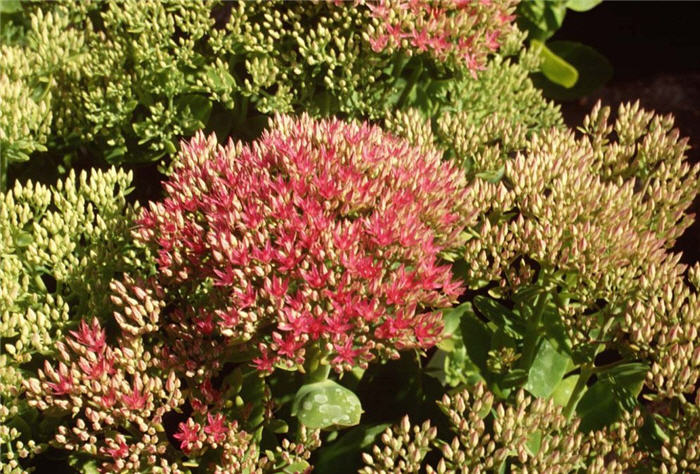| Botanical Name: Sedum spectabile 'Brilliant' | |
| Common Name: Brilliant Stone Crop |

-
Anatomy
-
Culture
-
Design
Plant Type
Perennial, Succulent
Height Range
1-3'
Flower Color
Pink
Flower Season
Summer, Fall
Leaf Color
Grey Green, Light Green
Bark Color
n/a
Fruit Color
Brown
Fruit Season
Winter
Sun
Full, Half
Water
Low
Growth Rate
Fast
Soil Type
Sandy, Clay, Loam, Rocky, Unparticular
Soil Condition
Average, Poor, Well-drained, Dry
Soil pH
Neutral
Adverse Factors
Attracts Bees
Design Styles
English Cottage, Formal, Japanese, Mediterranean
Accenting Features
Showy Flowers
Seasonal Interest
Summer, Fall
Location Uses
Entry, Perennial Border, Parking Strip, Patio, Raised Planter, Swimming Pool, Walls / Fences, With Rocks
Special Uses
Container, Mass Planting
Attracts Wildlife
Butterflies
Information by: Stephanie Duer
Photographer: Myrna Dowsett
Photographer: Myrna Dowsett
-
Description
-
Notes
Known for its compact habit and generous flowering, Brilliant Sedum is a garden star. Clusters of star-shaped flowers emerge in early to mid summer, and are whitish green. As fall approaches, flowers turn hot pink. Succulent leaves are a pale green and emerge in late winter. Tough and easy to grow, it loves a hot sunny location. Attractive to butterflies and bees, it is sure to please for many years to come.
A tall stonecrop, Brilliant grows about 24 inches tall and 18 to 24 inches wide. Sedums emerge early in the season, about the time daffodils start poking up. Cut away old stems, taking care not to damage new rosette of leaves, although, honestly, this is a very forgiving plant. Is most compact in full sun, and can get a little leggy if too much shade. Prefers loose, well-draining soil, but will grow in all but the most wet sites.